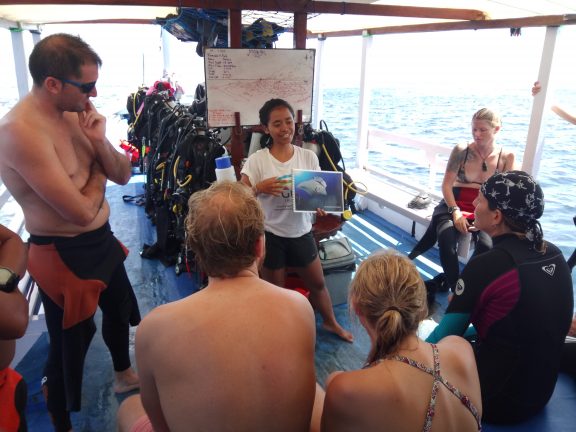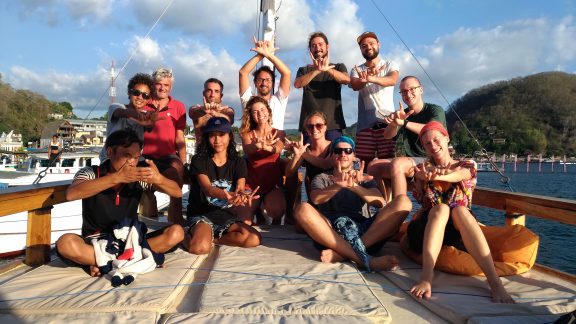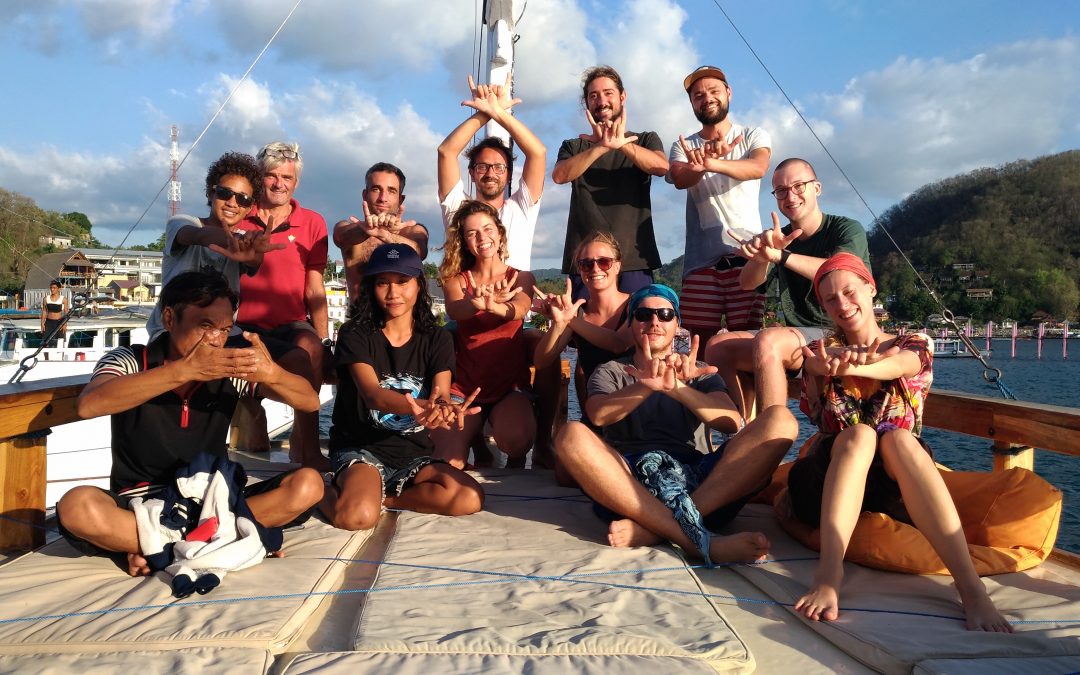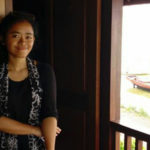It has never been easier to travel to far-flung places, immerse yourself in foreign cultures, and encounter exotic wildlife. But have you ever asked yourself how you can contribute to sustainable tourism, by ensuring that your travels have a positive impact on local communities and ecosystems?
As divers, we enjoy meeting charismatic species such as mantas, sharks and turtles. But have you ever considered that your memories and photographs could be a valuable tool to help protect the environment?
Have you ever thought that you could be a marine conservationist?
I have been diving since 2013, and during that time I have been lucky to meet many marine creatures. These encounters have become just memories. That changed this year, when I joined MantaWatch as a Sustainable Tourism Assistant. In this role, I have come to realise that we can all play an important role in protecting our ocean environments.
According to UNESCO, sustainable tourism planning and management is one of the most pressing challenges facing the future of tourism destinations and businesses. This a challenge that I am working to address through my role. My goal is to capture basic information from divers about the species and impacts they see underwater, and to strengthen collaboration between government and the tourism industry so that these data can help inform and evaluate sustainable management plans.
My days start early. I leave my house by 06:30, and by 07:00 I am already at one of the dive operators in Labuan Bajo to prepare my diving and survey equipment and meet today’s tourists. We walk together to the port, where we board our vessel for the day. My first task is to discuss the day’s diving plan with the captain and divemasters onboard, and to fit my survey objectives to this plan. Next I set up my equipment and check that everything is present and working correctly.
Once we are underway, it is usually one or two hours sailing to our first dive site. This is a great opportunity for me to to sit down with the guests and share some information about manta rays, responsible marine wildlife encounters and sustainable tourism. I also tell them about MantaWatch Online, and how to report their marine wildlife encounters.

Lucia Kusolo, Sustainable Tourism Assistant, gives a manta briefing to guests with Flores Diving Centre
Under the water, I may have different tasks to do. During some surveys I observe interactions between divers and manta rays, at other times I record biological information from the manta rays I meet, including their identify, gender and other attributes. And during other surveys I inventory the species that I see. After every dive, I spend time with each and every guest and also record the species that they saw. As we sail back to port at the end of the day, I am busy writing up my data and inputting it into our database.
We usually return to shore at around 17:00, but I still have lots to do. With my fellow Sustainable Tourism team members, I may need to contact dive operators to check which boats are going to a manta site the following day, ask whether they can accommodate our team, and begin preparing our equipment. At other times I may need to meet with partners such as Komodo National Park Authority to report on our latest progress. And sometimes, like today, I can sit in a cafe as I watch the sun set over Labuan Bajo harbour and write this post.
After five months in my role as Sustainable Tourism Assistant, I have realised that many people are concerned about the health of our oceans. Almost every tourist that I speak to is enthusiastic to support marine conservation efforts. One of our critical tasks now is to ensure that, through a collaborative process involving government, tourism industry and local communities, sustainable management plans can be developed and implemented that protect manta rays and other species, while delivering sustainable benefits to local communities and livelihoods.

Tami Roriris, Sustainable Tourism Assistant, and guests from Manta Rhei after a successful survey day


